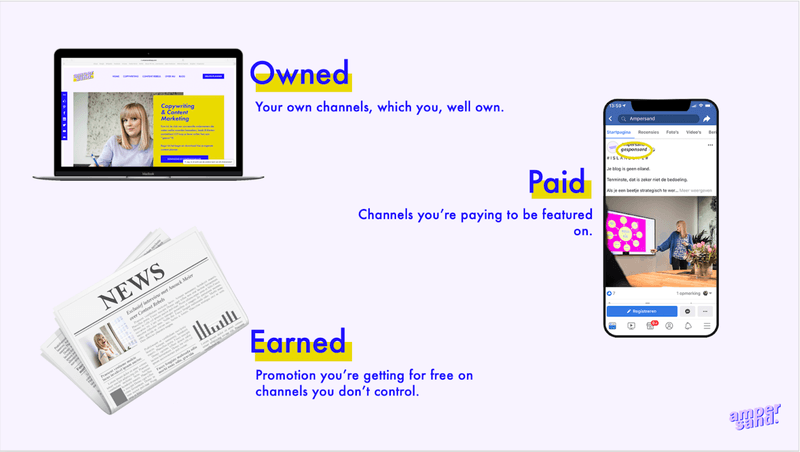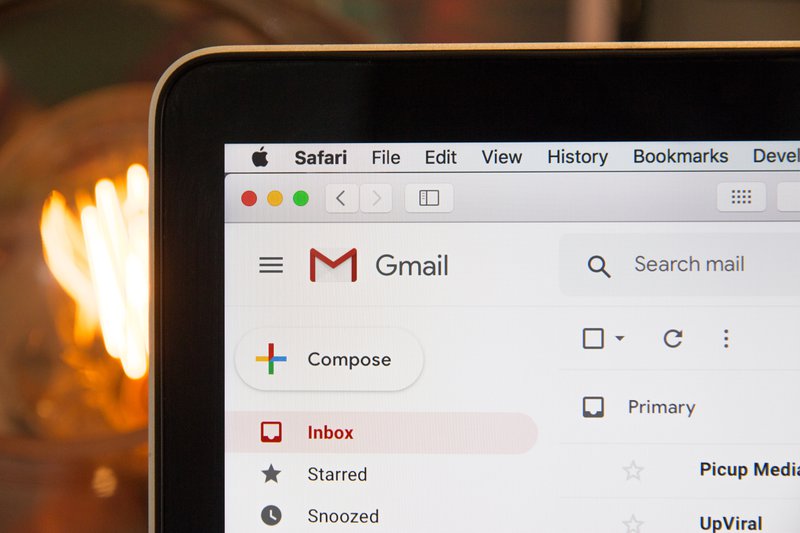Os dez mandamentos da distribuição eficaz de conteúdo
Masterclass de marketing de conteúdo: Parte Sete
Na parte anterior desta Aula Magna de Marketing de Conteúdo, apresentamos algumas dicas testadas e aprovadas técnicas de redação dos mestres da velha escola de copywriting.
In Part Seven – which is all about content distribution – I want you to take a cue from yet another classic authority on spreading valuable content: Jesus Christ himself.
Because if you have a message that is worth spreading, you need to share the love, people. Not once, not twice, but over and over again. You’ve got to preach that stuff to whomever wants to hear it. You know, evangelist-style.
All joking aside – there’s a ton of content created every day — and the sad truth is: most of it doesn’t get any attention at all.
But it doesn’t have to be this way. If you’ve taken the time to write a well-researched, quality piece of content, follow these commandments to make sure your message gets to your followers. You’ll have them singing Hallelujah in no time!
This post is Part Seven in a brand spanking new Masterclass Series on Content Marketing. We believe it’s an incredibly important topic – and according to a little survey we did, you do too. Trouble is: there is so much content on content marketing out there (talk about meta) and a lot of the intel is conflicting.
Trazemos esta Masterclass para você em parceria com Anouck Meier, Chief Storytelling Officer da Ampersand. Anouck é um redator de conversão e estrategista de marketing de conteúdo que já trabalhou com várias marcas, grandes e pequenas, para ajudá-las a atingir suas metas de negócios por meio de conteúdo estratégico. Vamos esclarecer a história do conteúdo de uma vez por todas em um guia abrangente. Pronto para mergulhar de cabeça?
- Jeroen Corthout, cofundador Salesflare, um CRM de vendas fácil de usar para pequenas empresas B2B

1. Você deve levar a sério a distribuição de conteúdo
Oh, I remember the days when I used to have a carefully curated list of blogs in the favorites folder of my browser. There were only a handful of them – mostly fashion blogs and (cringe, cringe) wedding planning blogs (and yes, I did eventually get married, thank you).
I would check in on them pretty much on a daily basis (or more – if work was slow) to see if there were any new posts. Hey – it’s just what you did in the early 00’s.
Esses dias? Já se foram há muito tempo, pessoal.
Em 2015, a Moz e o Buzzsumo analisaram mais de um milhão de artigos na Web (Content, Shares, and Links: Insights from Analyzing One Million Articles). Suas descobertas?
Turns out that 75 percent of blog posts didn’t have a single inbound link and more than half had only two or fewer Facebook interactions. I mean, if that’s the impact you’re going to create with a blog post, you may as well stick to cold calling, talking to random strangers in a bar or Craigslist for finding leads.
“It may sound harsh but it seems most people are wasting their time either producing poor content or failing to amplify it.”
Ouch.
With the interwebs only getting more cluttered over time, most content simply never reaches its intended audience. You’d almost start believing content marketing doesn’t work. Of course, by now you know there is significant evidence to the contrary.
What is also clear is that simply posting your content and waiting for your ideal reader to magically discover it just doesn’t cut it anymore. A lot of content creators think their job is done when they’ve published their content. Or when they’ve posted their links on social media and sit there eagerly waiting for the accolades (and customers) to roll in.
Hate to break it to you, but unless you’re incredibly lucky, that won’t happen without some extra marketing legwork and a focus on content distribution.

2. Você deve usar diferentes tipos de canais de distribuição
Before diving into concrete content distribution strategies, it’s probably a good idea to consider the different types of distribution channels out there. There are pros and cons to each of them and ideally, you’ll end up using a mix of different channels.
Há aproximadamente três tipos de canais nos quais você pode distribuir seu conteúdo:
- Canais próprios: These are the content distribution channels you, well, own: your website, email marketing list and your blog. The good news: when you’re using these channels, you don’t depend on some funky em constante mudança algorithm (hello, Mr. Zuckerberg!). On these channels, you’re do chefe. On the downside, it can be incredibly challenging to condition your followers to go out of their digital way to visit these outposts regularly. It’s just not 2003 anymore. You should also focus on posting consistently and diversifying your own channels. Try using a rede de distribuição de conteúdo (CDN) para publicar seu conteúdo em todos os seus canais simultaneamente.
- Canais pagos: Paid promotion enables you to share messages on platforms you don’t own – but only if you’re prepared to put some (or a lot of) money on the table.
- Canais adquiridos, compartilhados ou emprestados: Some attention for your content can be “earned” – this is the case if you get spotted by influencers, Agências de relações públicas or the press. Shared channels, i.e. social media, have opened up a host of opportunities for content creators to post original content too. However, you should be aware that your activities on these platforms are ultimately controlled by the business decisions of a third party (hello, Mr. Zuckerberg again!). They can change their policies and procedures – or shut down their business – on a whim.
A mensagem deve ser clara: don’t put all your eggs in the basket someone else is holding for you. Certifique-se sempre de ter sua base coberta antes de divulgar sua mensagem em canais pagos ou compartilhados.

3. Você deve otimizar o conteúdo para a pesquisa orgânica
We’ve discussed the importance of setting up your content for SEO-success before, but it doesn’t hurt stressing it again. Your site and your blog are owned channels – it makes sense to start your distribution efforts there.
With search playing such a powerful role in content discovery, it’s crucial to optimize your content for search engines to easily discover, categorize, and feature it prominently whenever your ideal reader runs searches relevant to your business.
Considere esses elementos ao configurar seu conteúdo para ser encontrado:
- Palavras-chave: As palavras-chave informam aos mecanismos de pesquisa sobre o que é o seu conteúdo, para que eles possam direcionar os leitores às informações que eles procuram. Escolha cuidadosamente suas palavras-chave e tente acertar as ponto ideal entre o volume de pesquisa e o nível de concorrência – as we’ve covered before.
- Metadados: Metadata allow you to ascribe meaning and context to your content. This includes categories, tags, page titles, H1, H2,… and URLs. Optimize these so search engines can effectively rank and display your content.
- Chamadas para ação: Conteúdo de qualidade é conteúdo acionável. As chamadas para ação indicam aos usuários que você quer que eles façam algo depois de se envolverem com o seu conteúdo e mostram a eles exatamente onde ir.
4. Você deve criar uma lista de e-mails ativos
If email newsletters were around 2000 years ago, I’m positive Jesus would have had one. Trust me, it’s the sensible thing to do if you want to spread your message consistently and stay top of mind with your following.
Because here’s the thing: trying to write in such a way that your content is discoverable by Google is wonderful, but nothing compares to having your very own audience of fans, followers, potential customers, partners and ambassadors just waiting to hear from you.
Your email list is where you gather that audience and where you can keep them close. It’s an owned channel – you call the shots. And you should make use of every opportunity you get to share your content via email.
Add a simple call to action at the bottom of every piece of content you produce, inviting readers to join your list so they don’t miss freshly published content in the future. Keep them coming back for more!

5. Você deve postar nas mídias sociais (muito)
Once you’ve covered your own ground in terms of content distribution, it’s time to turn to shared media. Because let’s face it – just because your content is right for your audience doesn’t mean they’ll just stumble across it in the course of their day. That’s where social media comes in.
Now, whatever you do, don’t just start posting the link to your latest blog post to Facebook and LinkedIn without a course of action. Here are a few things to keep in mind while you craft those social shares:
- Escolha o(s) canal(is) correto(s).
Cross-posting de conteúdo on multiple channels without adapting the content for the specific medium? That’s a no-no!
Some content is perfect for Facebook, some for Instagram, and some is great for both, but you should always play by the rules of each specific medium. A gazillion hashtags might work well on Instagram, but they’ll do you no good on LinkedIn (where folks prefer a sober 3-5 hashtags, for the record).
- Publique nos horários certos.
Most (big) social media platforms have built-in analytics. And if you’re using social media planning tools like CoSchedule, Hootsuite, SmarterQueue or Buffer, you should also have access to information about what days and what times of day your audience is most active.
Use esses dados a seu favor!
- Incentivar a conversação
The term is social media. Don’t just dump your links and be gone.
Encourage and participate in conversation around the post when you share it. Don’t go all diva on your followers – engage with them and act approachable. These are the folks that could end up doing business with you, first impressions count!
- Envolva outras pessoas
Early traction is what you’re looking for to feed the algorithm’s appetite. If you can, try to line up a few others willing to share your content as soon as it hits the platforms. If you’ve mentioned a person or brand in your post, always reach out beforehand to ask them to check it out and if they’re willing to consider sharing.
Other tactics include using a “pod” or a small group of peers who are also producing high-quality content who will thoughtfully like, comment, or share your latest work. You know, a bit like Jesus’ apostles did.
- Use hashtags (com cuidado).
Although hashtags are easy to overdo (unless you’re on Insta, where you should use all 30 of them), they’re also a way to get new eyeballs on the content you’re posting. Research what hashtags are relevant for your industry and sprinkle them around.
One last piece of advice: if you’ve written high-quality, evergreen content (which is what smart cookies do), share your content more than once. Share it often over time. Because of the algorithms, there’s only a small chance your followers will see your post the first time around. Optimize their chances of seeing your post appear in their feeds by sharing your content more than once. Sharing is caring!

6. Você deve postar em outros blogs
Another way of growing your audience – perhaps the most straightforward of all – is to write a piece of high quality content for another blog with a related audience (and preferably a bigger reach), and link to your original work in a contextually relevant way.
In my experience, high-quality guest blogging has the highest success rate of any link-building technique. It’s an ideal way to build your authority and expand your audience.
Aqui estão algumas práticas recomendadas de postagem para convidados que você deve ter em mente:
- Seja seletivo. Se você optar por seguir esse caminho, encontre sites confiáveis relacionados ao seu setor. Procure sites que tenham boa autoridade de página e domínio, bem como conversas e interações fortes e relevantes.
- Comece a comentar nas postagens e a construir relacionamentos com os editores desses sites. Apresente a eles ideias interessantes de postagens de blog adaptadas às necessidades de seu público.
- Publique somente em sites que lhe darão seu próprio título. Dedique algum tempo à criação de um título bem pensado que desperte o interesse dos leitores.
- Você só será recompensado por seus esforços de guest posting se escrever conteúdo valioso e relevante que incentive as pessoas a buscarem mais conteúdo seu.
- Considere as postagens de resumo. Many blogs publish “melhor de” lists, or collections of resources they feel may be of interest to their audience. Pitch for your piece to be added to these lists.
- Sempre que você publicar um guest post, promova o artigo com afinco.
- Republicação pode ser uma estratégia inteligente em plataformas de conteúdo importantes, como LinkedIn Pulse e Médio.
7. Você deve usar o marketing de influência
Influencers are like the apostles of today. They’re the ones people are already paying attention to. They have nurtured large audiences and can provide megaphones for your message.
What you’re looking for is influential people or organizations on the topic you’re writing about.
Você pode usar uma ferramenta como Followerwonk para pesquisar biografias e criar uma lista de pessoas em seu nicho específico. Use as estatísticas disponíveis, como número de seguidores e autoridade social, para escolher quais influenciadores abordar.
Once you’ve identified the influencers you’d like to reach out to, make the connection and consider the long haul: it’s not about quick wins, but about building relationships with these people.
Make clear why your content is relevant for their audience and how it will help them. Cater your pitch and be personable. If your pitch isn’t successful this time around, all isn’t lost: if you’ve made a good impression, you’re now on their radar screen and future opportunities may follow.
8. Você deve (P)estender a mão
Um pouco mais antiquado do que o marketing de influência é o RP clássico, uma forma de promoção que também se baseia muito na construção de relacionamentos. Relacionamentos com jornalistas, neste caso.
First, you want to find the right person to pitch. You’ll want to find out what the reporter is actually interested in and carefully tailor your pitch to make sure you’re sending them something they’ll find interesting. Make sure to review any submission guidelines they might have before you approach them too.
Make it worth their while: journalists want to publish new and exciting stories, not re-post some random press release that everyone else is publishing too. Show them you put some serious thought and consideration into your outreach and tell them explicitly what they’ll get out of it.

9. Você deve considerar a promoção remunerada
If you’ve been posting on social media for some time now, you will have experienced it: organic reach on social media is in sharp decline. And with search trends and algorithm changes continually complicating operations, if you want to hit your business goals with strategic content, you should definitely consider amplifying its power with paid promotion.
Até mesmo um orçamento pequeno pode ter um grande impacto se você fizer a segmentação correta. Atualmente, há uma pletora de técnicas de publicidade paga por aí: banners ou anúncios de exibição, acordos de patrocínio, colocação paga de produtos e coisas do gênero.
But maybe you’ll want to consider more strategic means of getting your high-quality content efforts in front of the right consumers, such as:
- Publicidade nativa: Rather than disrupting the reader’s editorial experience, the content in native advertising is designed to align with the tone, format, and topical focus of the articles a reader would expect to find on the publisher’s site.
- Pesquisa paga ou marketing de mecanismo de pesquisa (SEM): This is a way to get content in front of customers when they are looking to make a purchase decision: on search engines. This technique involves purchasing pay-per-click ads or other sponsored listings that appear near the top of search engine results pages (SERPs). Two of the most common tools are Google AdWords and Microsoft’s Bing Ads.
- Promoção paga na mídia social: No one has better data on your prospects than the social media they spend time on on a daily basis. Boost your content distribution’s reach much further and do so much faster by building paid promotional campaigns on those platforms. Most of them let you customize who receives your ads in very targeted ways, which can be a very powerful bonus.

10. Você guiará seus seguidores
Como criador de conteúdo on-line, você deve sempre facilitar ao máximo o consumo do conteúdo pelo leitor. Ajude-os a descobrir conteúdo adicional que possa ser de seu interesse com vinculação interna sistemática.
Há algumas maneiras diferentes de fazer isso:
- Artigos sugeridos: If you’ve enjoyed reading this article, there is a good chance you will be interested in other parts of this Content Marketing Masterclass as well. Which is why we’re including links to those articles at the bottom of this one. This tactic is an incredibly easy way to help your reader discover and engage with more relevant content.
- Links contextuais: If you’ve been paying attention, you’ll have noticed that we’re interweaving links to other resources in the body of this article too, often providing a more in-depth explanation on a particular topic beyond the scope of the current article. Another quick win!
- Diretórios de conteúdo: Another way to organize your content so readers can more easily find what they’re looking for is to create a category page, which details the strongest content you’ve written on a particular topic, divided into subtopics.
Onde você está pregando para o coro? E sua mensagem é bem recebida ou precisaria de mais megafones? Deixe-nos saber nos comentários!
And don’t forget to check back next week for Part Eight of our Content Marketing Masterclass about repurposing your content!
- Medindo o ROI do marketing de conteúdo: Show Me The Money - 10 de outubro de 2019
- Repurposing Content: 4 maneiras fáceis de obter mais do seu conteúdo - 3 de outubro de 2019
- Os dez mandamentos da distribuição eficaz de conteúdo - 26 de setembro de 2019

